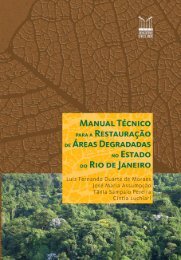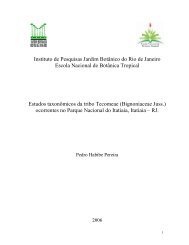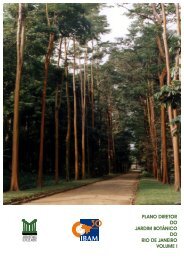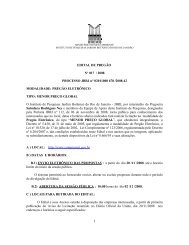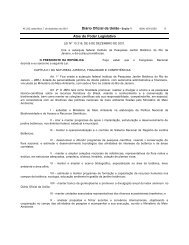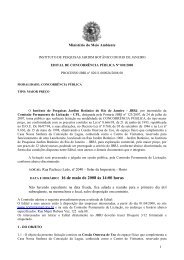anatomia do lenho e dendrocronologia de lianas da famÃlia ...
anatomia do lenho e dendrocronologia de lianas da famÃlia ...
anatomia do lenho e dendrocronologia de lianas da famÃlia ...
Create successful ePaper yourself
Turn your PDF publications into a flip-book with our unique Google optimized e-Paper software.
54<br />
species of Machaerium (Leguminosae - Papilionoi<strong>de</strong>ae) was studied and presented cambial<br />
seasonality (Leon-Gómez & Monroy-Ata, 2005).<br />
The changes in anatomical structure, which produces growth rings, are a dynamic process<br />
affected by many ecological factors (Wimmer, 2002). Some factors that make cyclic<br />
responses in tree growth are: water supply; temperature; photoperiod; light intensity; and<br />
phenological behaviors, which control or are controlled by hormones (Amobi, 1974; Mariaux,<br />
1981; Tomlinson & Longman, 1981; Carlquist, 2001). Borchert (1999) <strong>de</strong>tect that the<br />
phenology and cambial activity is affected by rainfall seasonality in tree species growing in<br />
dry sites, and most of them have annual growth rings. In brevi<strong>de</strong>ciduous and evergreen<br />
species the consecutive reduction in correlation of phenology and cambium activity with<br />
climatic seasonality was noticed. These factors may act in <strong>lianas</strong> and produce growth<br />
responses; making distinct growth rings or producing growth rings of sporadic occurrence, as<br />
observed in this study.<br />
The results obtained by this study <strong>de</strong>monstrate that P. micracantha, P. adiantoi<strong>de</strong>s, S.<br />
tenuifolia and D. frutescens might be used for further <strong>de</strong>ndrochronological studies. Because<br />
the very clear rings visible un<strong>de</strong>r microscopy and macroscopy, which are fun<strong>da</strong>mental to<br />
enable a precise count and width measurement. Several species of the same genus or the same<br />
species are used or indicated in literature for growth rings researches, e.g. Pipta<strong>de</strong>nia excelsa<br />
(Grau et al., 2003), Dalbergia ecastaphyllum (Amobi, 1974), D. frutescens and four<br />
Pipta<strong>de</strong>nia species (Alves & Angyalossy-Alfonso, 2000), Acacia species (Gourlay, 1995a,<br />
1995b; Eshete & Stahl, 1999). Senegalia grandistipula, S. lacerans, S. martiusiana and S.<br />
pedicellata from Itatiaia are species with cambial variants and they should not be used in<br />
<strong>de</strong>ndrochronologic studies, because the rings are of sporadic occurrence. However, these<br />
species taken from places with more drastic environmental change around year can make<br />
distinct growth rings with frequent occurrence, showing that more studies with this species<br />
from other ranges are required.



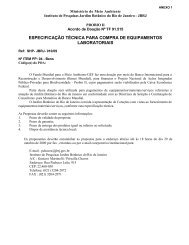
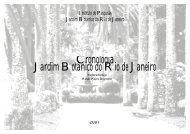
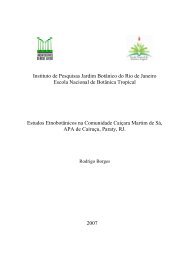
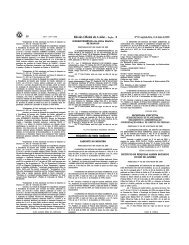
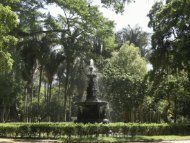
![Memorando nº [Número do memorando/DAMF-RJ/Nome da Unidade]](https://img.yumpu.com/43163661/1/184x260/memorando-na-namero-do-memorando-damf-rj-nome-da-unidade.jpg?quality=85)
